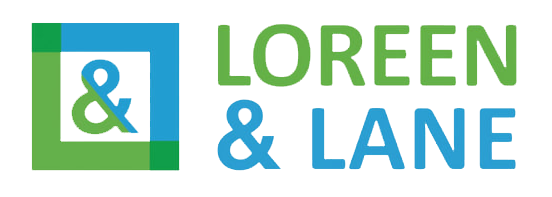Medicare Advantage, often referred to as Medicare Part C, is a comprehensive alternative to traditional Medicare that offers seniors and eligible individuals more choices when it comes to their healthcare coverage. It provides an opportunity to receive all the benefits of Original Medicare, coupled with additional perks, all under one plan. In this article, we’ll delve into the world of Medicare Advantage, exploring its overview, the different types available, and addressing common questions to help you navigate this vital aspect of healthcare.
I. Overview of Medicare Advantage
Medicare Advantage, as the name suggests, advances and extends basic Medicare coverage. It is a government-approved program administered by private insurance companies, which means it combines the resources of both the public and private sectors to deliver an extensive range of healthcare services. Here are a few crucial Medicare Advantage features:
What It Covers
Medicare Advantage plans cover everything included in Original Medicare, which encompasses Part A (hospital insurance) and Part B (medical insurance). However, that’s just the starting point. These plans can go above and beyond, offering additional benefits such as prescription drug coverage, dental, vision, hearing, and wellness programs.
Networks and Access
Medicare Advantage plans often come with provider networks, which may include Health Maintenance Organizations (HMOs), Preferred Provider Organizations (PPOs), and Private Fee-for-Service (PFFS) plans. Some plans might have strict rules regarding which healthcare providers you can see, while others are more flexible, allowing you to see specialists without referrals.
Costs and Premiums
Medicare Advantage plans come with a broad range of fees. Some plans have low or no monthly premiums, making them attractive to those on a tight budget. However, you may need to pay copayments or coinsurance when you receive medical services. It’s essential to carefully review the plan’s cost-sharing provisions to understand your financial obligations.
Prescription Drug Coverage
Most Medicare Advantage plans include prescription drug coverage (Part D), making it a popular choice for those who require regular medications. This additional coverage helps reduce out-of-pocket expenses for prescription drugs.
II. Types of Medicare Advantage Plans
Medicare Advantage plans come in various forms, each tailored to different preferences and healthcare needs. Let’s explore the most common types:
Health Maintenance Organization (HMO) Plans
In order to visit specialists, members of HMO plans must select a primary care physician (PCP) and get referrals. They typically offer a network of doctors and hospitals, and you need to stay within this network to receive full benefits. HMOs tend to have lower premiums and out-of-pocket costs, making them cost-effective options for individuals who are comfortable with network restrictions.
Preferred Provider Organization (PPO) Plans
PPO plans provide more flexibility when it comes to choosing healthcare providers. You can see specialists without referrals, both in and out of the network, although staying in-network typically results in lower out-of-pocket costs. While PPOs often have higher premiums than HMOs, they offer greater freedom of choice.
Private Fee-for-Service (PFFS) Plans
PFFS plans offer the most flexibility in terms of healthcare provider choice. They don’t require a PCP, referrals, or network restrictions. However, it’s essential to ensure that your healthcare provider accepts the plan’s terms and conditions, as the payment structure may differ from Original Medicare.
Special Needs Plans (SNPs)
Special Needs Plans are designed for individuals with specific healthcare needs, such as chronic conditions or institutionalized care requirements. These plans tailor their benefits and services to address the unique needs of the enrollees.
Dual Eligible Special Needs Plans (D-SNPs)
D-SNPs are a subset of Special Needs Plans created for individuals who are eligible for both Medicare and Medicaid. They provide comprehensive coverage for dual-eligible beneficiaries, addressing both medical and financial needs.
Medical Savings Account (MSA) Plans
MSA plans combine a high-deductible Medicare Advantage plan with a Medical Savings Account. The plan deposits funds into the account, which you can use to pay for medical expenses. These plans typically do not cover prescription drugs and rely on the account balance to cover healthcare costs.
HMO Point-of-Service (HMO-POS) Plans
HMO-POS plans offer a mix of HMO and PPO features. They require you to choose a primary care physician and obtain referrals for specialists, but they also allow limited out-of-network care. These plans provide a balance between provider choice and cost savings.
III. Frequently Asked Questions (FAQs) about Medicare Advantage
Now that we’ve covered the basics of Medicare Advantage, let’s address some common questions that individuals often have when considering these plans.
Who is eligible for Medicare Advantage?
To be eligible for Medicare Advantage, you must be enrolled in both Medicare Part A and Part B. You must also live in the plan’s service area, as Medicare Advantage plans can have regional restrictions. While most individuals become eligible for Medicare at age 65, some may qualify due to a disability or specific medical conditions.
Can I have a Medicare Advantage plan and a Medicare Supplement (Medigap) plan simultaneously?
No, you cannot have both a Medicare Advantage plan and a Medigap plan at the same time. Medigap policies help cover the out-of-pocket costs associated with Original Medicare, while Medicare Advantage plans often have their own coverage rules and cost-sharing. You must choose one or the other, based on your preferences and healthcare needs.
Are prescription drugs included in all Medicare Advantage plans?
Many Medicare Advantage plans include prescription drug coverage (Part D), but not all of them do. It’s important to carefully review the plan’s details to see if it offers the specific prescription drug coverage you need. If not, you can consider enrolling in a separate standalone Part D plan to complement your Medicare Advantage coverage.
Can I switch from Original Medicare to Medicare Advantage or vice versa?
Yes, you can switch from Original Medicare to a Medicare Advantage plan or vice versa during specific enrollment periods. The Annual Enrollment Period (AEP), which runs from October 15 to December 7 each year, is a common time for making these changes. Additionally, there is a Medicare Advantage Open Enrollment Period from January 1 to March 31, during which you can switch to a different Medicare Advantage plan or return to Original Medicare.
Do Medicare Advantage plans cover extra benefits like dental, vision, and hearing?
Yes, many Medicare Advantage plans offer additional benefits such as dental, vision, and hearing coverage, as well as wellness programs and fitness memberships. However, the availability and extent of these extra benefits can vary from one plan to another, so it’s crucial to review plan details to determine what is included.
Can I use my Medicare Advantage plan outside of my plan’s service area?
In most cases, Medicare Advantage plans have service areas and may not cover healthcare services received outside of that area. However, some plans offer limited out-of-network coverage for emergencies or urgent care. It’s vital to check with your plan to understand the terms and conditions for out-of-area care.
Are there any costs associated with Medicare Advantage?
Medicare Advantage plans often have monthly premiums, but these can vary widely from plan to plan. Some plans have low or no premiums, making them an affordable option. In addition to premiums, you may also have copayments, coinsurance, and deductibles for various medical services. It’s important to carefully review the plan’s cost-sharing details to understand your financial obligations.
Can I switch between different types of Medicare Advantage plans?
Yes, you can switch between different types of Medicare Advantage plans, such as HMO, PPO, or other variations, during the Annual Enrollment Period or the Medicare Advantage Open Enrollment Period. When switching plans, be sure to consider the network restrictions, coverage, and costs associated with the new plan.
How do I know which Medicare Advantage plan is right for me?
Choosing the right Medicare Advantage plan depends on your individual healthcare needs and preferences. Consider factors such as your preferred healthcare providers, the coverage you require (including prescription drugs), and your budget. You can use the Medicare Plan Finder tool on the official Medicare website or consult with a licensed insurance agent to help you make an informed decision.
Can I change my Medicare Advantage plan if I’m not satisfied with it?
You can make changes to your Medicare Advantage plan during the Annual Enrollment Period or the Medicare Advantage Open Enrollment Period. If you are dissatisfied with your current plan, this is an opportunity to explore other options that better suit your needs.

Conclusion
Medicare Advantage plans offer a comprehensive approach to healthcare coverage, combining the benefits of Original Medicare with additional perks and options. With various plan types available, individuals can choose the one that best aligns with their healthcare needs and preferences. By addressing common questions about Medicare Advantage, we hope to empower you to make informed decisions about your healthcare coverage, ensuring that you receive the care you deserve in a way that fits your lifestyle and budget.
If you’re seeking guidance on selecting the right Medicare Advantage plan or have questions about your options, don’t hesitate to reach out to the Retirement Answer Team. Our experienced agents are here to help you find a plan that suits your needs and provide answers to any queries you may have. Your health and peace of mind are our top priorities, and we’re ready to assist you on your journey to a secure and comfortable retirement. Contact us today to take the first step towards a worry-free future.

